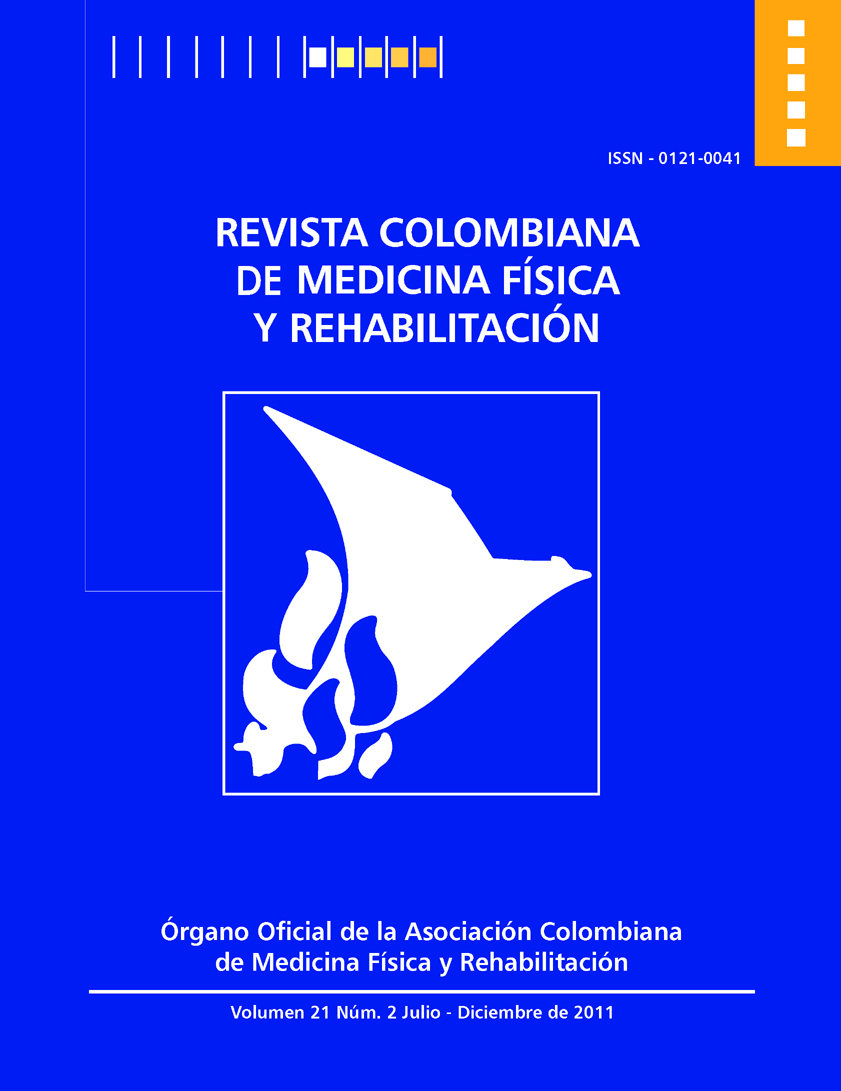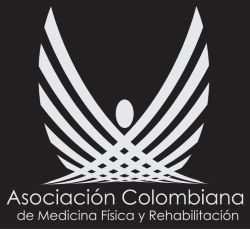Comparisson of tizanidine and baclofen for spasticity control in children seen at hospital de la misericordia from january 2008 to june 2009
Keywords:
muscle Spasticity, Baclofen, Tizanidine, Ashworht and Tardieu.Abstract
Spasticity is a sequel of injuries of the SNC that interferes with the voluntary activity, causes delay or regression of the development, favors the appearance of deformities osteoarticulares and produces pain. The useful drugs in spasticity have studied little in children, the studies that there are comparisons against placebo, the tizanidina and the baclofen is used but they have not compared one.Objective: to determine the effectiveness in the reduction of the spasticity of the patients dealt with baclofén and tizanidina.
Subjects: patients between 2 and 14 years with spasticity that attend to Hospital Infantil de la Misericordia.
Materials and methods: nearly prospective longitudinal experimental test clinical, was realised initial clinical evaluation and four monthly controls of spasticity with the scales of Ashworth and modified Tardieu, degree of the dose of medicine according to the answer, evaluation of indirect effect and controls of hepatic and renal function.
Results: 36 patients 17 in the group of Baclofen 19 deal with Tizanidina Improvement in 58% of the patients with Baclofen versus 56% of Tizanidina. The group of Baclofen improved in average 8 points in scale of Ashworth (p: 0.00) versus
5 in the group of Tizanidina (p: 0,01).
Indirect effect: Baclofen 47% versus Tizanidina 63%. The tests of hepatic and renal function: 1 patient with elevation of transaminasas in the group of Baclofen.
Retirements by indirect effect: Baclofen 2 Tizanidina 3 Conclusion: greater effectiveness and tolerance of the Baclofen versus Tizanidina.
References
1. Calderón R. et al. Tratamiento clínico (no quirúrgico) de la espasticidad en la parálisis cerebral. Rev Neurol 2002;34:1-6.
2. Campistol J. Fármacos empleados por vía oral en el tratamiento de laespasticidad. Rev Neurol 2003;37(1):70-4.
3. DeLisa J, et al. Physical Medicine and Rehabilitation: Principles and Practice, 4th ed. Lippincot Williams and Wilkims; 2004.
4. Sheean G. The Pathophysiology of Spasticity. Eur J Neurol 2002; 9 (Suppl. 1): 3-9.
5. Platz T. Clinical scales for the assessment of spasticity, associated phenomena, and function: a systematic review of the literature. Disabil Rehabil 2005; 27: 7-18.
6. Mehrholz J. et al. Reliability of the Modified Tardieu Scale and the Modified Ashworth Scale in adult patients with severe brain injury: a comparison study. Clin Rehabil 2005; 19: 751-59.
7. Vivancos F. et al. Guía del tratamiento integral de la espasticidad. Rev Neurol 2007; 45 (6): 365-75.
8. Vásquez A. et al. Utilidad de la tizanidina. Seguimiento de un año en el tratamiento de la espasticidad en la parálisis cerebral infantil. Rev Neurol 2006;43(3):132-36.
9. Money J. et al. Pharmacologic management of spasticity in cerebral palsy. J Pediatr Orthop B; 23:679-86.
10. Rushton D. et al. Cost-Effectiveness Comparison of Tizanidine and Baclofen in the Management of Spasticity. Pharmacoeconomics 2002;20(12):827-37.
11. Mutlu A. et al. Reliability of Ashworth and Modified Ashworth Scales in Children with Spastic Cerebral Palsy; BMC Musculoskelet Disord 2008; 9-44.
12. Ward A. A summary of spasticity management a treatment algorithm. Eur J Neurol 2002; 9 (suppl. 1): 48-52.
13. Haugh A. et al. A systematic review of the Tardieu Scale for the measurement of spasticity. Disabil Rehabil 2006; 28(15): 899-907.
14. Zafonte R. et al. Acute Care Management of Post-TBI Spasticity. J Head Trauma Rehabil 2004;19(2): 89-100.
15. Meythaler J. et al. Orally Delivered Baclofen to Control Spastic Hypertonia in Acquired Brain Injury. J Head Trauma Rehabil 2004;19:101-108.
16. Scholtes V. Clinical assessment of spasticity in children with cerebral palsy: a critical review of available instruments. Dev Med Child Neurol 2006; 48: 64-73.
17. Calderón F. Escalas de medición de la función motora y la espasticidad en parálisis cerebral. Rev Mex Neuroci 2002; 3(5): 285-89.
18. Mackey A. et al. Intraobserver reliability of the modified Tardieu scale in the upper limb of children withhemiplejia. Dev Med Child Neurol 2004;46:267-272 267.
19. Jozefczyk P. The Management of Focal Spasticity. Clinical Neuropharmacology 2002; 25:158-73.
20. Wood D. et al. Biomechanical approaches applied to the lower and upper limb for the measurement of spasticity: A systematic review of the literature. Disabil Rehabil 2005; 27(1/2): 19-32.
21. Voerman G. et al. Neurophysiological methods for the assessment of Disabil Rehabil 2005; 27(1/2): 33-68.
22. Montané E. et al. Oral antispastic drugs in nonprogressive neurologic diseases. Neurology 2004;63: 1357-63.
23. Scheinberg A. et al. Oral baclofen in children with cerebral palsy: A double-blind cross-over pilot study. Journal of Paediatrics and Child Health 42; 2006 :715-20.
24. Patel D., Soyode O. Pharmacologic Interventions for Reducing Spasticity in Cerebral Palsy. Indian J Pediatr 2005; 72 (10): 869-72.
25. Richardson D. Physical therapy in spasticity. Eur J Neurol 2002; 9 (Suppl. 1): 17-22.
2. Campistol J. Fármacos empleados por vía oral en el tratamiento de laespasticidad. Rev Neurol 2003;37(1):70-4.
3. DeLisa J, et al. Physical Medicine and Rehabilitation: Principles and Practice, 4th ed. Lippincot Williams and Wilkims; 2004.
4. Sheean G. The Pathophysiology of Spasticity. Eur J Neurol 2002; 9 (Suppl. 1): 3-9.
5. Platz T. Clinical scales for the assessment of spasticity, associated phenomena, and function: a systematic review of the literature. Disabil Rehabil 2005; 27: 7-18.
6. Mehrholz J. et al. Reliability of the Modified Tardieu Scale and the Modified Ashworth Scale in adult patients with severe brain injury: a comparison study. Clin Rehabil 2005; 19: 751-59.
7. Vivancos F. et al. Guía del tratamiento integral de la espasticidad. Rev Neurol 2007; 45 (6): 365-75.
8. Vásquez A. et al. Utilidad de la tizanidina. Seguimiento de un año en el tratamiento de la espasticidad en la parálisis cerebral infantil. Rev Neurol 2006;43(3):132-36.
9. Money J. et al. Pharmacologic management of spasticity in cerebral palsy. J Pediatr Orthop B; 23:679-86.
10. Rushton D. et al. Cost-Effectiveness Comparison of Tizanidine and Baclofen in the Management of Spasticity. Pharmacoeconomics 2002;20(12):827-37.
11. Mutlu A. et al. Reliability of Ashworth and Modified Ashworth Scales in Children with Spastic Cerebral Palsy; BMC Musculoskelet Disord 2008; 9-44.
12. Ward A. A summary of spasticity management a treatment algorithm. Eur J Neurol 2002; 9 (suppl. 1): 48-52.
13. Haugh A. et al. A systematic review of the Tardieu Scale for the measurement of spasticity. Disabil Rehabil 2006; 28(15): 899-907.
14. Zafonte R. et al. Acute Care Management of Post-TBI Spasticity. J Head Trauma Rehabil 2004;19(2): 89-100.
15. Meythaler J. et al. Orally Delivered Baclofen to Control Spastic Hypertonia in Acquired Brain Injury. J Head Trauma Rehabil 2004;19:101-108.
16. Scholtes V. Clinical assessment of spasticity in children with cerebral palsy: a critical review of available instruments. Dev Med Child Neurol 2006; 48: 64-73.
17. Calderón F. Escalas de medición de la función motora y la espasticidad en parálisis cerebral. Rev Mex Neuroci 2002; 3(5): 285-89.
18. Mackey A. et al. Intraobserver reliability of the modified Tardieu scale in the upper limb of children withhemiplejia. Dev Med Child Neurol 2004;46:267-272 267.
19. Jozefczyk P. The Management of Focal Spasticity. Clinical Neuropharmacology 2002; 25:158-73.
20. Wood D. et al. Biomechanical approaches applied to the lower and upper limb for the measurement of spasticity: A systematic review of the literature. Disabil Rehabil 2005; 27(1/2): 19-32.
21. Voerman G. et al. Neurophysiological methods for the assessment of Disabil Rehabil 2005; 27(1/2): 33-68.
22. Montané E. et al. Oral antispastic drugs in nonprogressive neurologic diseases. Neurology 2004;63: 1357-63.
23. Scheinberg A. et al. Oral baclofen in children with cerebral palsy: A double-blind cross-over pilot study. Journal of Paediatrics and Child Health 42; 2006 :715-20.
24. Patel D., Soyode O. Pharmacologic Interventions for Reducing Spasticity in Cerebral Palsy. Indian J Pediatr 2005; 72 (10): 869-72.
25. Richardson D. Physical therapy in spasticity. Eur J Neurol 2002; 9 (Suppl. 1): 17-22.
How to Cite
1.
Cuevas HA, Valencia Valencia D. Comparisson of tizanidine and baclofen for spasticity control in children seen at hospital de la misericordia from january 2008 to june 2009. Rev. Colomb. Med. Fis. Rehabil. [Internet]. 2012 Apr. 14 [cited 2025 Oct. 18];21(2):76-85. Available from: https://revistacmfr.org/index.php/rcmfr/article/view/10
Downloads
Download data is not yet available.
Downloads
Issue
Section
Original articles
| Article metrics | |
|---|---|
| Abstract views | |
| Galley vies | |
| PDF Views | |
| HTML views | |
| Other views | |


